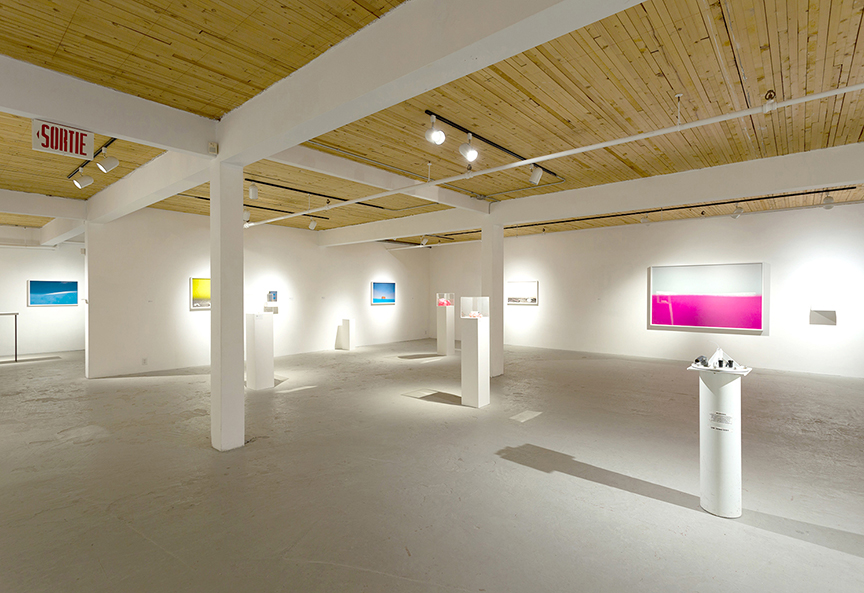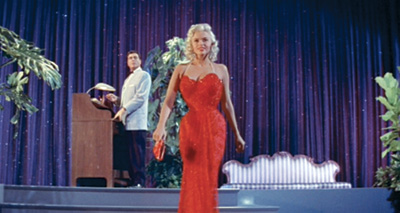
American artist Jessica Houston demonstrates the significance of the human privilege over the earth with her series titled The Call of Things. In this series Houston uses many different mediums to convey her message. Part of this series shows photographs of the North and South Poles. These photographs are all covered with vibrant felt that completely dominate the image.
One of the photographs in the series shows an abandoned police post. At first glance, the eye is attracted to the vibrant color covering the scenes, Houston did this to prove a point. She shows how easily something can be lost and completely covered up. The lighting of the photograph is medium to light. The sky in the photograph is a strong blue that contrasts well with the orange police post. The felt covering over the image is extremely bright and strong. The use of light in the photograph is diminished by the neon pink. The image features no characters, but rather a building that is abandoned and isolated. The building is in the bottom half of the image, and can be seen in its entirety. The eye is first drawn up to the neon pink, but the police post is away from the pigment and is positioned for the viewer to look down at it. The dominate color in this image is neon pink. This color is very vibrant and other worldly. This color was used to represent the toxic effects humans have on the earth. The impact humans have is extremely strong similarly to the pink in the image. The subsidiary image in the scene is the abandoned police post. In the original photograph this building would be the dominant feature, but the overbearing color draws the eye away. There is not a lot of visuals in this image, but there is a lot of information being displayed. The photograph shows a landscape and it shows the consequences of human waste and pollution. The image is stark and simple. The police post is positioned very close to the pink, and it is very close to being almost completely covered. The ground around the police post looks as if it is decaying, it looks like it hasn’t been cared for in a long time.
Visual artists and filmmakers have a lot in common. One thing is time. Both types of artists put a lot of time and though into their work. Both visual art and film have a lot of hidden messages and images that aren’t always seen at first glance. Both artists have a story and a reason behind the work. They are trying to teach a lesson, get a point across, or just share what they have with the world. One image can hold so much information and meaning that can only be unlocked through close examination and through deep thought.
This gallery image has a very strong and important message. It draws awareness to climate change, and calls to people to make a difference. Houston shows how toxic humans can be to the world and how easily beautiful landscapes can be wiped away and completely dominated. This image catches your eye due to its strong pigment, and the message is almost missed, unless you take a second glance. Houston work is so simple yet there is so much behind it.



